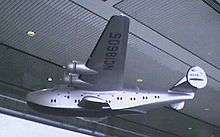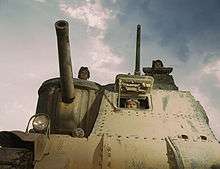Sponson


Sponsons are projections extending from the sides of land vehicles, aircraft or water craft to provide protection, stability, storage locations, mounting points, or equipment housing.
Watercraft
On watercraft, a sponson is a projection that extends outward (usually from the hull, but sometimes other parts of the vessel) to improve stability while floating, or to act as a securing point for other equipment. Vessels with unstable body shapes or unevenly distributed weight are likely to feature sponsons to help prevent capsizing or other instabilities. On many vessels, these projections from the main body of the vessel can be attached and removed quickly and fairly easily.[1]
Canoes and kayaks sometimes feature sponson attachments as well for stability in rough waters. These differ from outriggers, which extend a significant distance away from the body of the craft, and are employed on craft designed for open waters. A sponson's terminus is close to the craft, thereby allowing the boat to maneuver through more narrow spaces, and so is more likely to be used on smaller crafts that still require maneuverability through narrow passages.[1]
In the mid-1990s, advances in sponson design made sponsons a tool for better handling at high speeds, and they began being added to race boats.[2]
There are essentially three types of sponsons for watercraft available on the market today: the basic block type, the hooked or winged type, and the paddle or rudder type.[2]
Block sponsons
The block type is the simplest type. The leading end is usually round or pointed to allow reduce drag. "Its main function is to provide additional lift on the back of the hull, mostly during acceleration. They can also help provide better side-to-side stability at speed and reduce porpoising by providing a bit more hull surface at the rear of the craft."[2]
Winged/Hooked sponsons
Winged or hooked sponsons are the most common type sold today. In addition to added lift during acceleration, better side-to-side stability, and reduced porpoising, they provide improved handling. "The outside edge provides grip in turns, allowing you to turn sharper and faster without fear of the back end sliding out. They can also provide a pivot point for the hull in turns. One of the most overlooked benefits of these types of sponsons is that they have allowed riders to lean into turns more, which has made watercraft easier to push to their limits."[2]
Paddle/Rudder sponsons
Paddle or rudder type sponsons, which use a flat paddle-shaped rudder attached vertically to a block type sponson, do essentially the same thing, but the effect can be even more dramatic because the flat paddle or rudder portion of the sponson provides a sharper and more pronounced edge to catch the water.[2]
Aircraft
_refueling_SH-3.jpg)
On flying boats, a sponson can help extend the hull higher in the water, reducing drag and providing additional lift when the plane is taking off. Helicopters may also feature one or more sponson, and though most helicopters are not designed to land in or take off from water, these safety features are important should the aircraft crash land in water Sponsons on a helicopter can also store fuel or landing gear[1] (e.g. Sikorsky S-92 and Bell 222). When mounted on aircraft, they must be adjusted properly for aerodynamics when the aircraft is in flight; if they are not adjusted properly, the aircraft may become unstable or damage to the aircraft can become possible.[1]
Military

On land vessels, such as tanks or other military vehicles, and on naval warships, a sponson may refer to a mounting or enclosure projecting from the side or top of the structure/hull that is not used for buoyancy, but for armaments such as machine guns, or for purposes of visibility. It can be used for storage as well as a transport platform for people entering or leaving the vehicle.[1] It may also provide layers of bullet-proof protection and storage space, as found over the tracks of the Bradley Fighting Vehicle.
See also
- Costa Concordia salvage – an example of sponsons in use
- Ship Camel – related technology of external floatation tanks affixed on a ship to reduce her draught